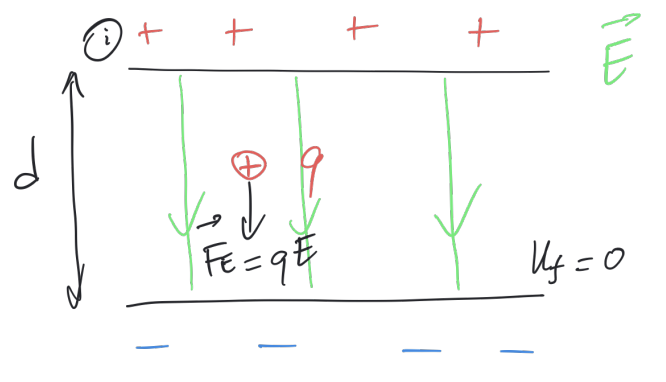Unit 9

Formulas
Work done in moving a charge in an electric field - W=\Delta V volts
Electric potential - V=\frac{U}{q} volts
Change in electric potential - \Delta V=\frac{\Delta U}{q} volts
Electric potential energy: U = qEd joules
Electric force on a charge in a field: F_E = qE Newtons
Electric potential for any field: U = qV joules
Electric potential for a uniform electric field: U=qEd joules
Conservation of energy - Ki+Ui=Kf+Uf
Kinetic energy - \frac{mv^2}{2}
Units
Volts (V) - 1 Joule per Coulomb (1 V = 1 J/C)
General Notes
When you have a conservative force in an electric field, it always points in the direction of decreasing potential energy
As a particle moves in the direction of the electric field, the electric potential energy for the particle decreases
Electric potential energy depends on both the charge and the electric potential experienced by that charge
Potential difference is crucial in analyzing work done in electric systems, as it directly relates to changes in potential energy
A positively charged particle will accelerate in the direction of the electric field and to a low potential
A negatively charged particle will accelerate in the opposite direction of the electric field and to a high potential
Electric Potential - the potential for potential energy within an electric field
Relationship between Fe and E if q > 0 - parallel
Relationship between Fe and E if q < 0 - antiparallel